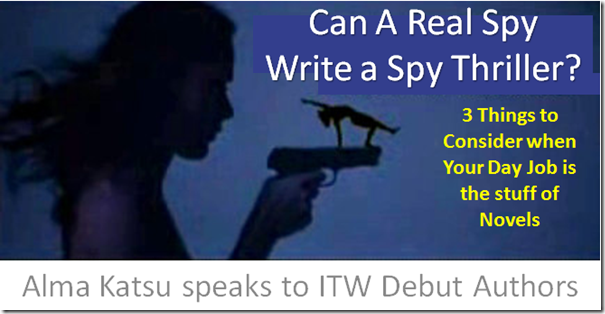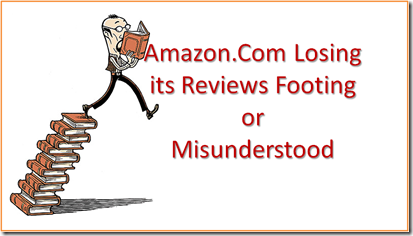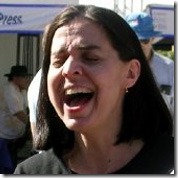3 Things to Consider when Your Day Job is the stuff of Novels
by Alma Katsu
When I was an analyst at CIA, many of my coworkers thought about sitting down one day and writing a spy novel. Obviously, few did. (Even I didn’t: my novel, The Taker, is historical with a supernatural element and had nothing to do with my intelligence career.)
But one analyst had penned a spoof of The Hunt for Red October as if it had been written in the rigid style taught to analysts in the Directorate of Intelligence. I wish I could show it to you—I’ve been told that a copy is floating around the Internet, but I couldn’t find it—because it perfectly illustrates the difference between being a spy in real life and being one in a novel. Needless to say, it made real intelligence analysts laugh so hard they’d blow Coke through their noses when they read it.
I worked in intelligence for nearly thirty years, splitting my time between the National Security Agency (known to you civilians as “the super-secret National Security Agency”) and CIA. Thirty years is a long time to do anything, long enough to ingrain the many quirks and peculiarities of the intelligence business into my DNA. (For instance, I find I must correct the inaccurate statement I made above, though it is a common misconception: technically, intelligence professionals are not “spies.” The people they recruit to give up secrets are spies.) 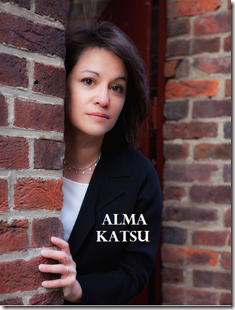
I was midway through my career as an analyst when I decided to return to writing fiction, something I’d abandoned once I started at NSA, as being a published writer is pretty much incompatible with working in intelligence. When literary agents found out about my day job, they’d invariably encourage me to write a spy novel. “You could show what it’s really like,” they’d say, and I took them at their word.
So I wrote a spy novel. It was a lot of work. I wanted to pick the right international conflict, one that I found interesting and I thought Americans should know more about. I wanted it to be accurate: my professional reputation was on the line.
I showed it to agents. To say they were underwhelmed is putting it kindly. I remember one telling me pointedly, “No one wants to read about someone doing their job.”
Of course, many writers are perfectly able to write great thrillers based on their day job: bookshelves are crammed with novels written by doctors, lawyers, police officers, pathologists, detectives, military personnel, police, you name it. For me, the decision not to write spy thrillers came down to this: it wasn’t fun. To me, writing is a means to be somewhere I want to be, with characters I want to be around—an escape. Writing spy novels kept me tethered to my workaday world, and it wasn’t rejuvenating.
You may be in a similar conundrum. What should you do if you’ve got a day job that seems custom-made for a novel but your heart is in writing an epic fantasy? Here are a few things you might want to consider:
1. Platform:
Having that killer day job—Navy SEAL, coroner for LA county—is a leg up for a writer, whether you decide to use it for your novel or not. Even though my book, The Taker, has nothing to do with the world of intelligence, mention of it tends to give me an extra second’s worth of consideration with reviewers and the publicity machinery. There’s a trade off, though: it’s really easy to confuse your potential audience about your product. They may be drawn to the killer day job and have no interest in your type of book (zombie apocalypse, romance.) If you go this route, you need to scrupulously manage your platform to ensure it doesn’t affect how your book is perceived.
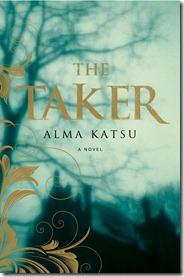 2. Your work leaks into your writing anyway:
2. Your work leaks into your writing anyway:
You know how people are always advising you to ‘write what you know’? I’ve found if you worked in a particular environment for a long time, you’ve absorbed enough of its culture that it’s going to come out in your writing. In other words, the ‘what you know’ will come through anyway, even if you don’t use specifics. For instance, I thought I’d left the spy business behind when I wrote The Taker, but someone at the publishing house pointed out that all my characters tend to be secretive and manipulative, never telling the truth when a cleverly managed facsimile of it will do. It hit me between the eyes: I’d duplicated the atmosphere at my former job.
3. Hold it in reserve:
Never say never. You may find one day that the prospect of writing that trial novel (if you’re a lawyer) or heist novel (if you’re a jewel thief) suddenly appeals. Now that I’m no longer working for any three-letter agencies, I’m thinking that one day I may come up with an idea for a spy novel that I can’t resist. Particularly if the series I’m writing now doesn’t work out. As a working writer, you owe it to yourself to use every tool in your toolbox.
Alma Katsu is the author of The Taker, the first in a trilogy of novels that have been compared to the early works of Anne Rice: historical thrillers with a supernatural element. The Taker was named one of the Best Debut Novels of 2011 ay ALA Booklist magazine. The second novel in the trilogy, The Reckoning, comes out in June 2012. She also blogs for the Huffington Post on intelligence and policy.
Related The Thrill Begins Articles:

